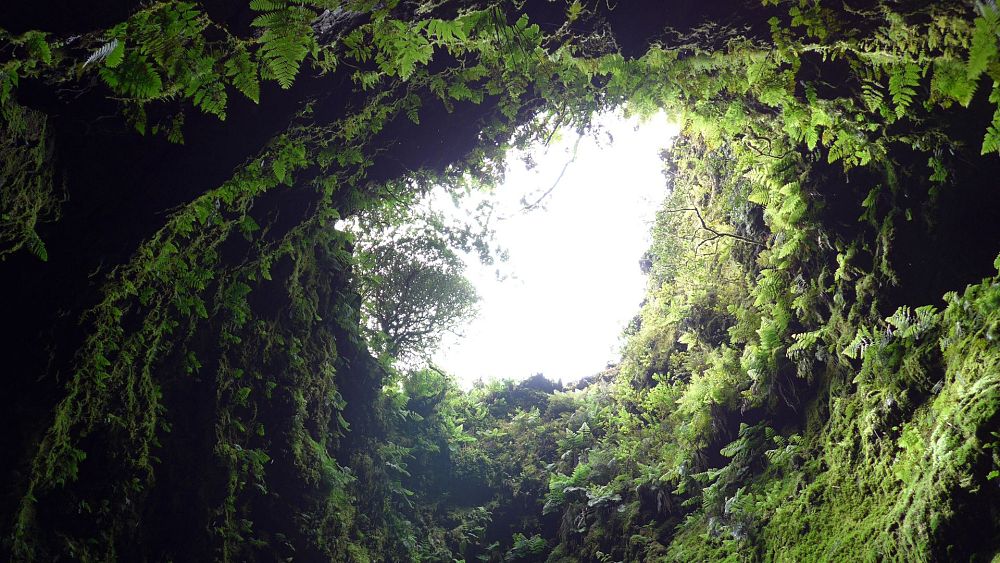Want to climb a volcano, but scared you’ll get caught in an eruption?
Fear not - Europe has plenty of extinct and dormant volcanoes.
From gentle strolls through alpine meadows to challenging treks up rocky peaks, these stunning natural wonders offer a range of unique hiking experiences - no lava-dodging required.
If you want the beautiful views - and social media clout - of summiting a volcano without the risk of flying debris, read on.
Spain: Visit a church inside Santa Margarida Volcano
Spain’s Santa Margarida Volcano - which last erupted 11,000 years ago - houses a small and humble chapel.
The small church in Catalonia is first mentioned in a text from 1403, when the church’s rector included it in his will. The original chapel was destroyed in a mediaeval earthquake, and the current building dates back to 1865.
Mostly empty, the church floods with people on the feast of Saint Margaret of Antioch. On this 20 July festival, hundreds of people trek up the side of the 700 metre volcano and take a pilgrimage to the holy site.
There are several hiking trails around the Santa Margarida Volcano, but the most popular route is the 3.5-kilometre circular trail that loops around the volcano's crater.
France: Hike up Puy-de-Dôme, a UNESCO world heritage site.
The Puy-de-Dôme is the highest point in the Chaîne des Puys, a chain of more than 80 volcanoes in central France. At a height of 1,465 m, it offers panoramic views over the rest of the chain.
Running along the north of the mountain, the hour-long Sentier des Muletiers trail is popular among hikers. If you want an easier ascent,, you can take the Panoramique des Dômes train. At the summit, you can explore the ancient Temple of Mercury, a third century Roman sanctuary.
Italy: Head for the Alban hills for a swim in a Caldera
Not all extinct volcanoes are dramatic craggy peaks. Take the rolling Alban Hills 20km southeast of Rome. Visit the Castelli Romani, charming towns dotting the gorgeous landscape, and enjoy local specialties like ‘porchetta’, a type of pork cut.
The dominant peak is Monte Cavo. There are two small calderas - the depressions formed during an eruption - which contain the lakes Lago Albano and Lake Nemi. At Lago Albano you can admire the nearby village of Albano Laziale, which houses the Pope’s summer palace and Papal gardens.
Portugal: Stare up a lava tube in Algar do Carvão
Situated in the beautiful Azores, this magnificent natural wonder is a bit further afield than the other places on this list. But it’s well worth the trip.
Visitors can walk down inside the ancient volcanic vent, which plunges 50 metres from the caldera to a rainwater fed lagoon at its deepest point.
Opening hours vary depending on the time of year, so check for current information. Tickets cost €6-9 per adult to visit one or two caves, with children under 12 entering free along with an adult.
Wales: Hike Mount Snowdon for stunning views
Snowdon or Yr Wyddfa - Wales’ highest mountain - used to be furiously eruptive. Its most powerful eruption, estimated to take place several hundred million years ago, would have been heard up to 5,000 km away.
Now, the beautiful mountain is a hiking hotspot. On a clear day, hikers at the 1,085 meters summit can see all the way to Ireland, Scotland, and the Isle of Man.
Spain: Sunbathe on black sun beaches in La Gomera
Like Algar do Carvão, La Gomera is a little further afield - it’s situated in the Canary islands in the Atlantic Ocean. You’ll have to fly to Tenerife and then catch a ferry to La Gomera, the smallest Canary Island.
But there are plenty of things to do once you arrive.
The island is the remnants of a heavily eroded ocean island shield volcano. It stopped erupting around three million years ago.
Take a dip in the Atlantic, sun yourself on volcanic black sand beaches or explore the misty Garajonay forest. This ancient laurel forest is filled with lush springs and streams.
Scotland: Enjoy a picnic with breathtaking vistas of Edinburgh
Arthur's Seat offers a breathtaking view of the city of Edinburgh. The hill is popular with tourists already but few know the remnants of a dormant volcano. It stands more than 250 metres tall, and has long served as a lookout point. In fact, the name "Arthur's Seat" derives from the Celtic word "Ard-na-Said," which means "Height of Arrows”.


